I'm working on a very simple text adventure in javascript. You are shown a paragraph of text, there is a continue for you to click which will progress you to the next paragraph of the story. Occasionally the button is replaced with several option buttons, for instance yes/no, or options 1/2/3 etc, which will alter the course of the story.
What is a clean and logical way to structure such a 'dialog system'?
This is what I have right now:
A variable timeline determines the next message and continuity of the story by cycling through a switch. When the story is linear, timeline increments by one, which leads to the next message. When a choice is encountered (such as in timeline = 2), my functions will allow the player to choose whether to continue through story path 1 (timeline 3,4) or story path 2 (timeline = 5...).
function nextMsg(){
switch(timeline) {
case 1:
nextMessage = "With a little bit of force you wrestle the door open. A draft of cool wind refreshingly glides over your body. You take a deep breath of fresh air and wander into the forest.";
break;
case 2:
nextMessage = "As you traverse the evergreen maze you stumble upon a small glade. A dark figure stands in the middle. You feel uneasy. Do you wish to investigate?";
showQuestion(3,5);
break;
case 3:
nextMessage = "You approach the dark figure. The silhouette, mysteriously, does not cast a shadow, nor does it reflect any light. Apprehensive but curious, you cautiously advance.";
showContinue();
break;
case 4:
nextMessage = "Drawing closer, you notice the ambient sounds of the forest around you fade into silence. In their place, a deep, rhythmic howling, much like that of a strong wind becomes audible.";
break;
case 5:
nextMessage = "Apprehensive of the shadowy figure, you decide to venture deeper into the forest.";
break;
}
}In theory, even if this gets overly complicated and convoluted it will all work. But if I decide to add/remove messages in between, the timeline numbers will get very messy and disorganised. It will also become very difficult to keep track of the possible story paths, especially as they weave in and out of each other. Is there a better way to structure data like this? A switch is the only thing I can think of, yet it feels stupid.
EDIT OF SUCCESS:
The 'story' is broken down into smaller linear 'sub-events', so individual paragraphs don't need to have any id. When the subevent reaches the last paragraph, any amount of choice buttons leading to different sub events will be generated. Thank you Dellirium for giving me insight on how to do this!
var subEvents =
[
{
id: 0,
text: ["par1","par2","par3","par4"],
options: ["Yes","No","Maybe"],
optionPaths: [1,2,2]
},
{
id: 1,
text: ["par5","par6","par7"],
options: ["Jes","No"],
optionPaths: [1,2]
},
{
id: 2,
text: ["no path","noo","nooooo"],
options: ["Y tho","No"],
optionPaths: [1,2]
}
]
var currentEvent = 0;
var eventCycle = 0;
function updateEventCycle(){
for(i=0;i<4;i++){
document.getElementById("l" + i).innerHTML = document.getElementById("l"+ (i+1)).innerHTML;
}
document.getElementById("l4").innerHTML = subEvents[currentEvent]['text'][eventCycle];
eventCycle++;
}
function clickEventHandler(nextEvent){
eventLength = subEvents[currentEvent]['text'].length;
if(eventCycle<eventLength) { //if event not completed
updateEventCycle();
//createContinueOption();
if(eventCycle==eventLength) {
createEventOptions();
}
}
if(typeof nextEvent !== 'undefined') {
currentEvent = nextEvent;
eventCycle = 0;
createContinueOption();
updateEventCycle();
}
}
function createContinueOption(){
document.getElementById("optionForm").innerHTML = '<input type="button" value="Continue" onclick="clickEventHandler()"/>';
}
function createEventOptions() {
options = subEvents[currentEvent]['options'].length;
optionsHTML = "";
for(i=0;i<options;i++) {
optionsHTML = optionsHTML + '<input type="button" value="'+subEvents[currentEvent]['options'][i]+'" onclick="clickEventHandler('+subEvents[currentEvent]['optionPaths'][i]+')"/>';
}
document.getElementById("optionForm").innerHTML = optionsHTML;
}#line4 {
color: rgba(0, 0, 0, 0.7);
}
#line3 {
color: rgba(0, 0, 0, 0.5);
}
#line2 {
color: rgba(0, 0, 0, 0.3);
}
#line1 {
color: rgba(0, 0, 0, 0.2);
}<div>
<span id="line1"><p id="l0">one</p></span>
<span id="line2"><p id="l1">two</p></span>
<span id="line3"><p id="l2">tre</p></span>
<span id="line4"><p id="l3">quatro</p></span>
<span id="line5"><p id="l4">ok</p></span>
</div>
<div id="optionForm">
<input type="button" value="Continue" onclick="clickEventHandler()"/>
</div>